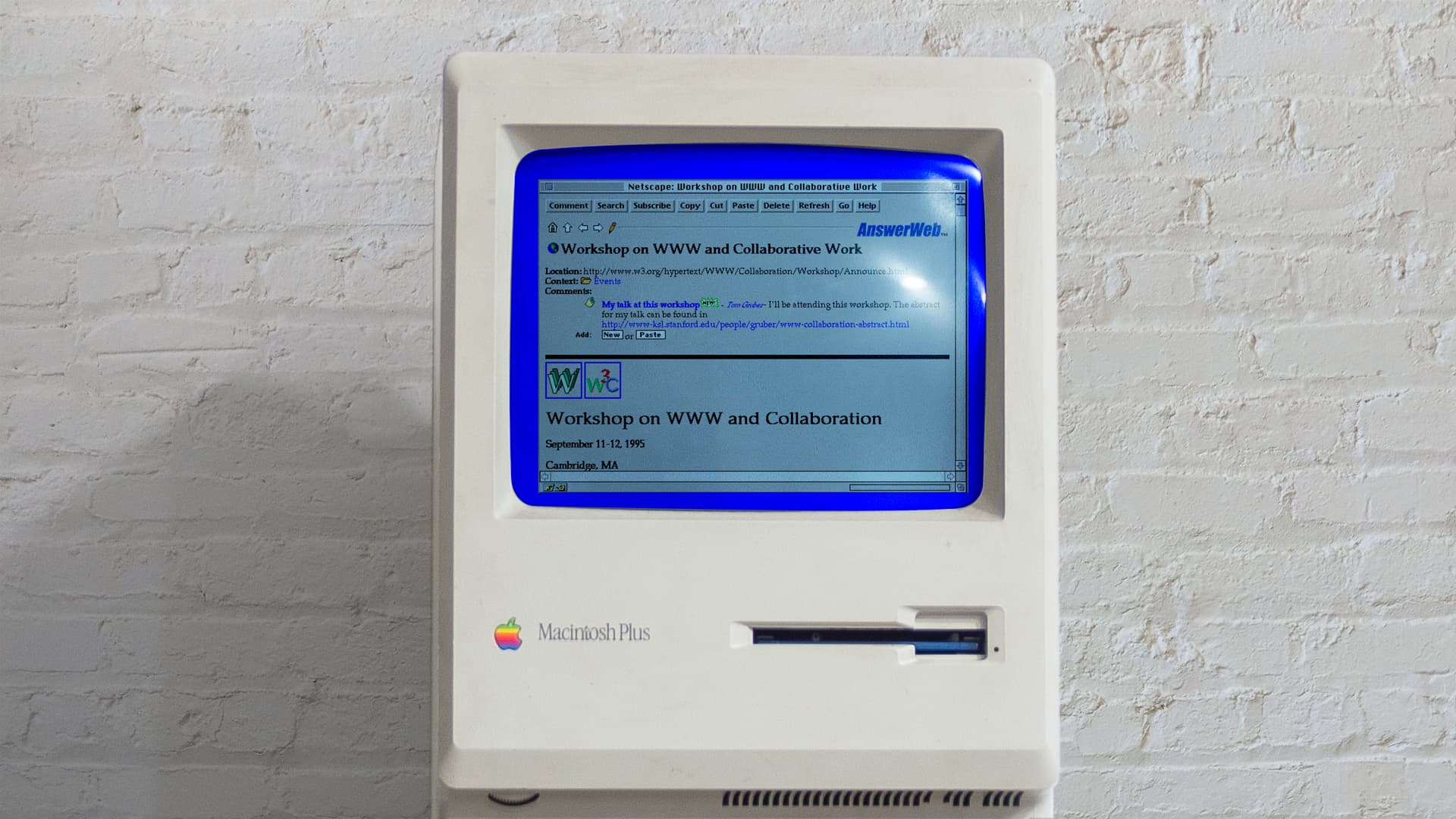Collaborating around Shared Content on the WWW | W3C Workshop on WWW and Collaboration, Cambridge, MA | Sept 11, 1995.

Presentation at a W3C-sponsored workshop where many of the early web collaboration people demonstrated their work.
Tom Gruber, Stanford University
Collaboration on the net is more than teleconferencing. Whenever we communicate or cooperate, we share context and content. On the net, however, some of the shared context and content is represented in the digital medium. As a consequence, the network infrastructure can give us more than a place to create and share information. It can also tell us what others are doing in that space; help us inform each other of relevant changes; track how information is found and used; and offer a context for discussions about shared content and how it is used. We don’t just share information; we share the process of accessing it, searching it, evaluating it, and using it.
I will describe a project that aims to take advantage of these possibilities. We are building a WWW collaboration system designed to serve as a group memory — that is, it should help a team of people collectively and collaboratively learn by providing a common, external memory in a social context. Many of the services it will provide are found on the web today: collectively managed directories (Yahoo), annotation systems (ComMentor), threaded discussion systems (Hypernews), and joint editing systems (Futplex). In the group memory project, the emphasis is on how shared content (which includes information gathered from elsewhere on the Web and its organization by a group) is the context for activities (searching, classification, association, commentary, notification, etc.)
Based on this work I would like to offer, for discussion, some requirements on the Web infrastructure to support collaboration around shared content. Issues include social management of access control, shared object identity, persistent query identity, and interoperability with other communication channels such as email and chat.